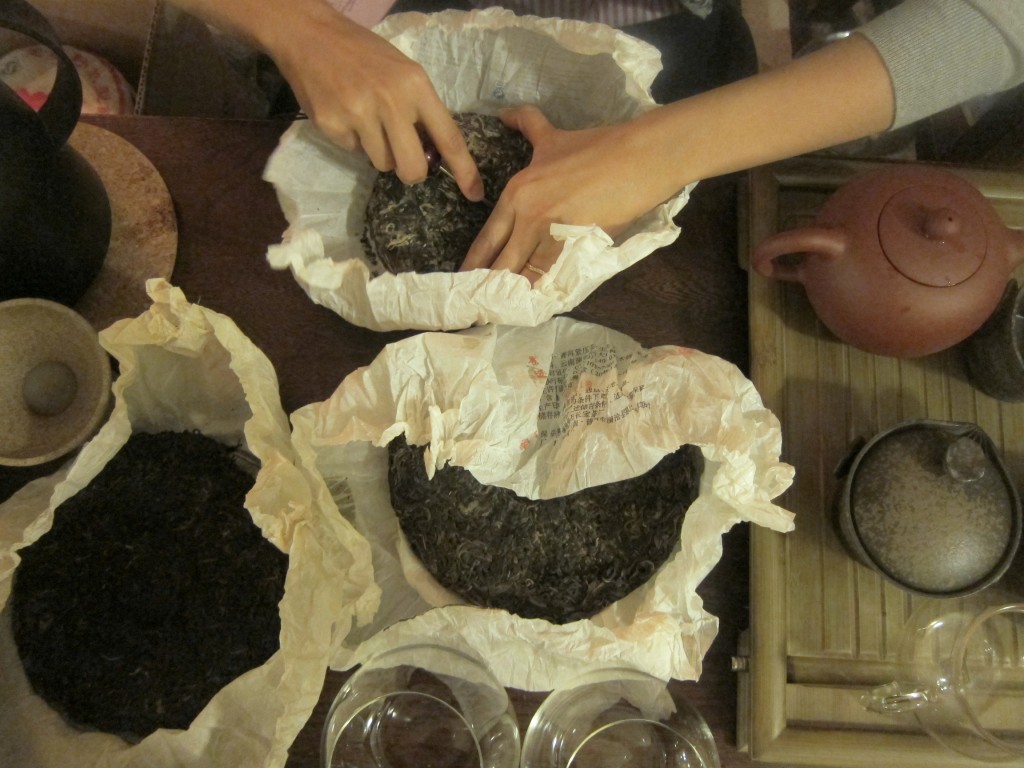
Recently, I had a few amazing evenings drinking puer at Cheryl’s place. In all honesty, I never liked puer before. The puer I’ve had at Teance, minus the Fragrant Leaf green puer, always struck me as muddy with a medicinal taste. In more positive words, “earthy like mushroom still on the ground after a long rain” (I’ve never chewed on mushroom still on the ground, but anyway…). When Cheryl told me that she likes puer, adding that she grew up drinking a lot of it in Singapore, I can understand her preference because it is, well, her preference, and I neither am a tea expert nor have drunk that much puer, so maybe there’s something about puer that I’d missed all along. Then one day Cheryl let me try some of her green puer, which she called “Najie puer” and “pure puer”. They tasted so bright (instead of muddy) that I started to realize maybe I do like puer after all, at least a specific category of puer.
Later, Cheryl gave me a lesson on puer. There are basically two categories of puer: green puer (also known as “raw puer”) and black puer (also known as “sho puer” or “ripe puer”). Puer is a varietal of tea plant, not a producing method (whereas “white”, “green”, “oolong” and “red” are the results of different producing methods). “Green puer” versus “black puer” indicates the producing method: green puer is made by letting the tea age on its own, and black puer is made by sprinkling water and piling up the leaves a certain way to quicken the aging process. So instead of letting the tea develop its “aged” taste naturally, now it tastes old but it’s actually not that old in years. Well, guess what, black puer doesn’t taste one bit like green puer. Just like cantaloupe picked green and stored cold doesn’t taste like cantaloupe picked ripe. The puer that I’d had at Teance, minus the Fragrant Leaf, are black puer.
There’s another thing called “purple leaf puer“: green puer made with the purple leaves. Apparently on the puer trees of Yunnan, there are some purple leaves. The tea cake actually looks more purple than its green cousins. Needless to say, purple puer is rare. [Note to self: should figure out what makes the leaves purple and how it affects the taste.]
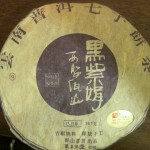
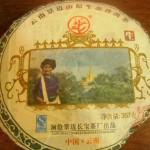
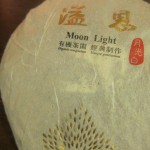
Together, we did three puer side by side: purple leaf, Jingmai green, and garden green. (Click on the image for a bigger view if you’d like to read the labels.) All three were roughly 4-5 years old, if I remember correctly. After a quick rinse, the purple leaf puer smelled of prune, the second one smelled of raisin (I know it doesn’t sound very different from the first one, but it’s definitely a notch down in the sweetness of dried fruits 😉 ), the third smelled completely different: grassy.
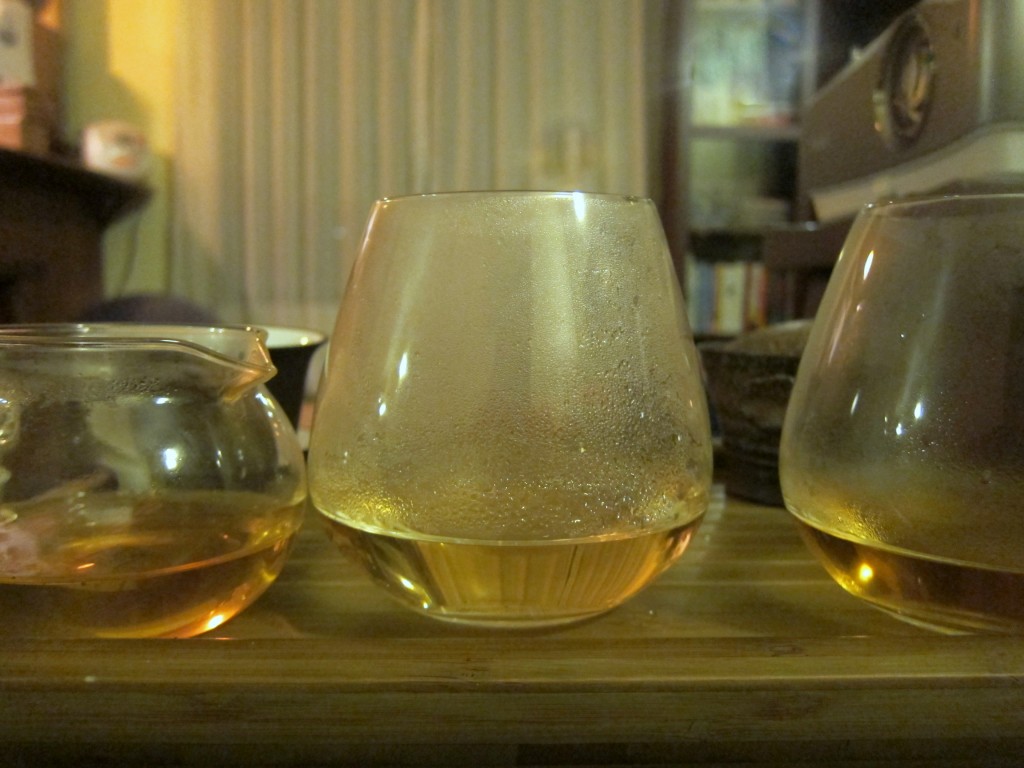
From left: raw purple leaf puer, jingmai mountain green puer, garden tea green puer. The color difference is quite vivid, isn’t it?
The taste: quite similar to the smell. The first two are sweet and fruity, and their tastes don’t really change much with time, but the last one gets more and more floral with the number of steeps. (Each infusion is extremely short, Cheryl basically poured the hot water in and out [Fragrant Leaf took 10 seconds, so this quick steeping is standard for green puer]. The water should not be too hot either, if you see steam rolling out of the pitcher, it’s too hot. I’m guessing the temperature was roughly 180 F…) I can’t choose a favorite among these three because I was mostly enthralled to realize that I do like puer after all, but it has to be raw puer.
We must have had at least 6 infusions of each. This I know for sure: 3 puer syncing together kept me up (fully awake, not tired, concentrative enough to work) for 2 consecutive nights. And I didn’t even feel sleepy during the day. \(O_O)/